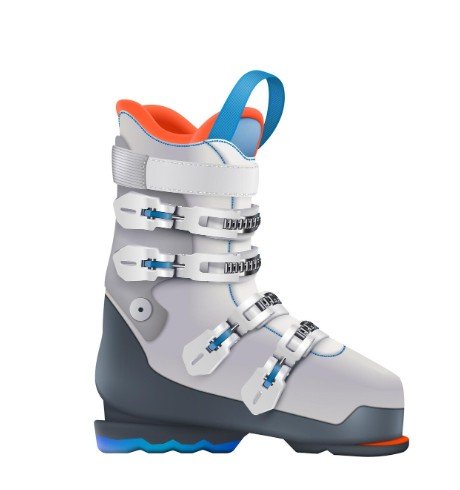Snowboarding Boots That Elevate Your Ride
Snowboarding Boots Built for Peak Performance
Basic Information
When it comes to snowboarding, having the right gear is crucial—not just for performance, but also for safety and comfort. Among all the equipment in a snowboarder’s arsenal, boots play a pivotal role. Snowboarding boots are the key connection between a rider and their board, directly affecting control, responsiveness, and overall experience on the slopes.
Selecting the right pair is not just about size or style—it's about optimizing your entire ride, from the first lift to the final descent.
The Core Function of Snowboarding Boots
Unlike casual winter footwear, snowboarding boots are engineered to provide support, insulation, and precision. They serve as the intermediary between the rider’s foot and the snowboard, working in unison with the bindings and board to translate body movement into smooth turns, jumps, and carves.
Boots that are too stiff, too soft, or poorly fitted can compromise agility, strain muscles, and even cause injury. That’s why expert riders emphasize fit, flex, and lacing systems when making their selection.
Understanding Boot Flex and Fit
- Flex Rating
Flex refers to the stiffness of the boot and directly affects performance. Stiffer boots (rated 7-10) are preferred by experienced or aggressive riders who value control and speed. Softer boots (rated 1-4) are better suited for beginners and freestyle riders, offering greater flexibility and comfort.
Mid-range flex boots are ideal for all-mountain riders who want versatility across various terrains.
- Fit and Sizing
Fit is everything. A proper-fitting boot should feel snug but not painful. Your toes should lightly touch the front of the boot when standing upright, but shift slightly away when bending your knees. Poorly fitted snowboarding boots can result in heel lift, pressure points, and reduced board control.
Heat-moldable liners have become popular for offering a customized fit. After a few sessions, these liners conform to your feet for better comfort and responsiveness.
Lacing Systems Explained
Choosing the right lacing system depends on personal preference, speed of adjustment, and riding style.
- Traditional Laces: Time-tested and adjustable, but can loosen during long rides.
- BOA® Systems: Feature dials for micro-adjustment and fast tightening, even while wearing gloves.
- Speed Laces: Use pull handles to tighten zones individually for a secure fit without delay.
These systems are available across various brands and models, and many snowboarders choose based on convenience and control preferences.
Materials and Construction Features
Modern snowboarding boots are designed with performance and durability in mind. Key components include:
- Outer Shell: Made of synthetic materials that provide protection and flex.
- Liner: Offers insulation, cushioning, and custom moldability.
- Footbed: Supports the arch and reduces fatigue.
- Outsole: Ensures grip and impact absorption during walking or landings.
Waterproofing, breathability, and ankle support also factor into comfort and long-term wear, especially for those spending full days on the mountain.
Finding Reliable Sources for Snow Gear
With an abundance of options available, choosing a trustworthy retailer is essential. Specialty stores like twelve board store often carry a curated selection of gear tailored to a variety of riders—from beginners to professionals. They also provide sizing advice, product comparisons, and expert guidance, which is particularly useful when investing in equipment designed to last multiple seasons.
Shopping from established stores helps ensure that you’re not only getting quality products, but also benefiting from up-to-date technologies and genuine warranties.
Frequently Asked Questions (FAQ)
Q1: Can I use regular winter boots for snowboarding?
No. Regular boots lack the structure, flex, and binding compatibility required for safe and effective snowboarding. Only proper snowboarding boots should be used.
Q2: How long do snowboarding boots typically last?
With regular use, a pair of boots can last anywhere from 1 to 3 seasons. Longevity depends on usage frequency, terrain, and how well they are maintained.
Q3: Are women’s snowboarding boots different from men’s?
Yes. Women’s boots are specifically designed with narrower heel cups, softer flex ratings, and ergonomic fits to accommodate anatomical differences.
Q4: Should I size up to accommodate thick socks?
It’s generally not recommended to size up. Instead, wear performance snowboarding socks, which are thinner and moisture-wicking, to ensure a snug and accurate fit.
Q5: How important is the brand when buying boots?
While brand can be an indicator of quality, the most important factors are fit, flex, and personal comfort. Reputable retailers like twelve board store often stock multiple top brands, allowing riders to try and compare.
Conclusion
Choosing the right snowboarding boots is a critical decision that can influence every moment on the slopes—from how you initiate turns to how your feet feel at the end of the day. With evolving technologies, diverse designs, and a range of lacing systems, today's boots cater to all styles and skill levels. For those seeking guidance and a reliable selection, stores such as twelve board store provide a valuable starting point.


